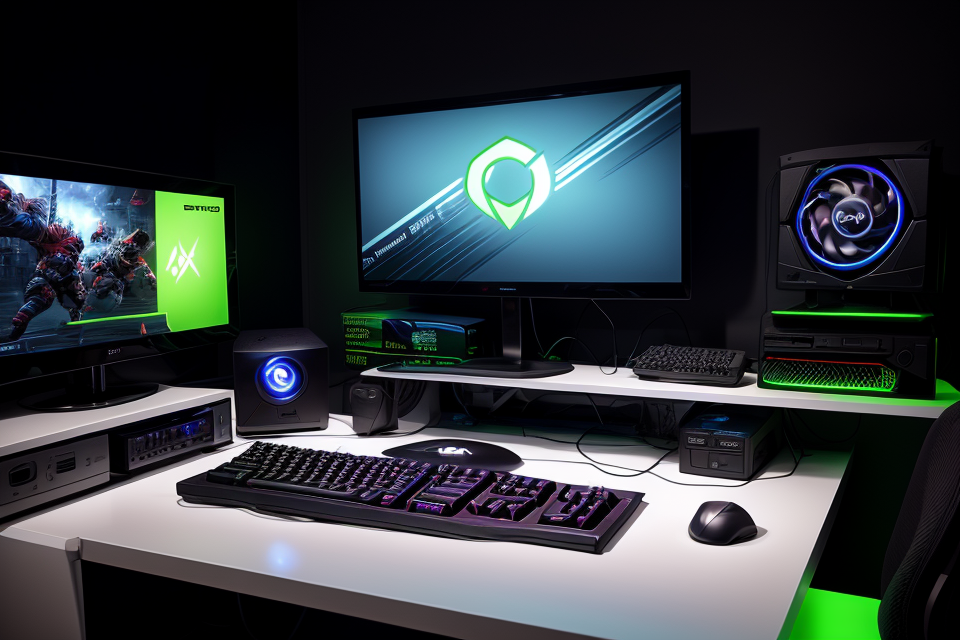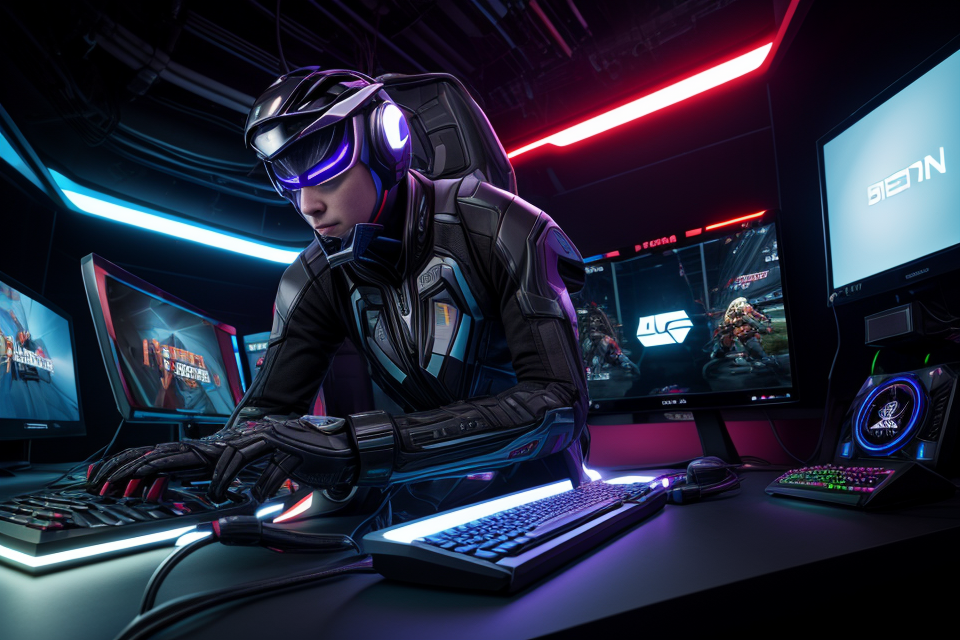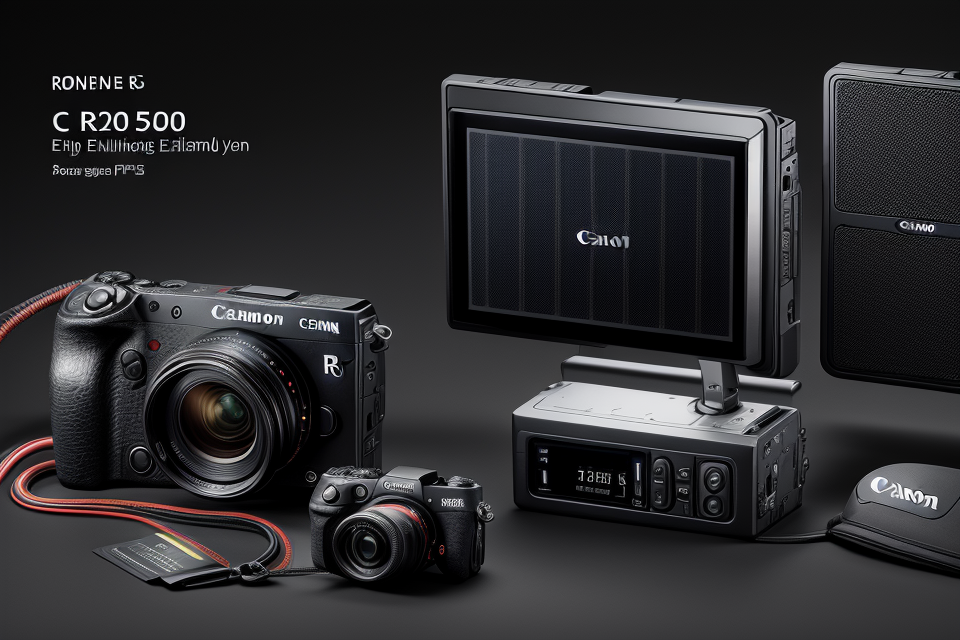
Gaming has come a long way since the early days of pixelated graphics and simple gameplay. Today, the gaming industry is a massive global phenomenon, with cutting-edge technology and stunning visuals driving the experience. However, to fully immerse yourself in the world of gaming, you need the right hardware, starting with a powerful graphics card. But what is the minimum graphics card requirement for entry-level gaming? In this article, we’ll explore the answer to that question and help you determine if your current graphics card is up to the task. So, grab a cup of coffee, sit back, and let’s dive into the world of gaming hardware.
The minimum graphics card requirement for entry-level gaming is typically a GPU with at least 2GB of dedicated memory and a minimum of 1GB of RAM. This would allow for basic gaming experiences, but more demanding games may require a more powerful graphics card. It’s important to note that the CPU and RAM can also play a significant role in gaming performance, so it’s recommended to have a balanced system to achieve optimal gaming experience.
Understanding the Basics of Graphics Cards
How Graphics Cards Impact Gaming Performance
Graphics cards, also known as graphics processing units (GPUs), play a crucial role in determining the performance of a gaming computer. They are responsible for rendering images and processing complex visual effects, which are essential components of modern video games. The performance of a graphics card is measured in terms of its ability to render images and process data quickly, and this is often referred to as its “frame rate.”
A higher frame rate means that the graphics card can render more images per second, resulting in smoother and more fluid gameplay. In contrast, a lower frame rate can result in a laggy and unresponsive gaming experience. Therefore, it is important to have a graphics card that can handle the demands of the games you want to play.
One of the key factors that affect the performance of a graphics card is its processing power. This is measured in terms of its number of cores and clock speed. A graphics card with more cores and a higher clock speed will generally be able to render images and process data faster than one with fewer cores and a lower clock speed.
Another important factor is the amount of video memory (VRAM) that a graphics card has. VRAM is used to store the images that are being rendered by the graphics card, and the more VRAM a card has, the more images it can store at once. This can be particularly important when playing games that have complex visual effects, such as open-world games or first-person shooters.
In addition to these factors, the type of graphics card can also impact gaming performance. Some graphics cards are designed for specific types of games or tasks, such as gaming laptops or graphics cards for virtual reality (VR) applications. It is important to choose a graphics card that is compatible with the games you want to play and that has the necessary features to support them.
Overall, the performance of a graphics card is a critical factor in determining the quality of the gaming experience. It is important to choose a graphics card that has enough processing power, VRAM, and the right features to support the games you want to play.
Key Features to Consider in an Entry-Level Graphics Card
When looking for an entry-level graphics card, there are several key features to consider. These include:
- Memory: The amount of memory on a graphics card can impact its performance. Generally, entry-level graphics cards have 2GB or 4GB of memory, which is sufficient for most games. However, if you plan to play games that require more demanding graphics, you may want to consider a card with more memory.
- Clock Speed: The clock speed of a graphics card determines how fast it can process information. In general, the higher the clock speed, the better the performance. For entry-level gaming, a clock speed of at least 1200 MHz is recommended.
- API Support: An application programming interface (API) is a set of tools and protocols that allows different software components to communicate with each other. It’s important to make sure that the graphics card you choose supports the APIs required by the games you want to play. Common APIs for gaming include DirectX and OpenGL.
- Power Consumption: Entry-level graphics cards typically have lower power consumption than high-end models. This can be an important consideration if you’re building a budget gaming PC or if you’re looking to reduce your energy costs.
- Compatibility: Make sure that the graphics card you choose is compatible with your motherboard and power supply unit (PSU). It’s also important to consider the size and form factor of the card, as it may not fit in all cases.
- Price: Entry-level graphics cards are generally more affordable than high-end models. However, prices can vary widely depending on the brand, model, and features. It’s important to set a budget and choose a card that meets your needs without breaking the bank.
Types of Entry-Level Graphics Cards
Entry-level graphics cards play a crucial role in determining the performance of a gaming computer. It is important to choose a graphics card that has enough processing power, VRAM, and the right features to support the games you want to play. When looking for an entry-level graphics card, it is important to consider factors such as memory capacity, clock speed, API support, power consumption, and compatibility. It is also important to assess your gaming needs, compare specs and benchmarks, and consider budget constraints. Some popular entry-level graphics card brands and models include NVIDIA GeForce GTX 1660 Super, AMD Radeon RX 580, and NVIDIA GeForce GTX 1650 Super.
Integrated Graphics vs. Dedicated Graphics Cards
When it comes to choosing a graphics card for entry-level gaming, there are two main types to consider: integrated graphics and dedicated graphics cards. Integrated graphics are built into the motherboard and use system memory, while dedicated graphics cards are separate components that require their own memory.
Integrated Graphics
Integrated graphics are typically less powerful than dedicated graphics cards, but they can still handle basic gaming needs. They are a good option for those who are on a budget or who do not plan to play demanding games. Integrated graphics are also more power-efficient, which can be a plus for laptops or other devices with limited power supplies.
One downside of integrated graphics is that they may not be able to handle more demanding games or graphics-intensive applications. They may also struggle with multi-tasking, as they share system memory with other components.
Dedicated Graphics Cards
Dedicated graphics cards are designed specifically for gaming and graphics-intensive applications. They have their own memory and processing power, which allows them to handle more demanding tasks. Dedicated graphics cards are also more customizable and offer more options for upgrading and tweaking settings.
One downside of dedicated graphics cards is that they can be more expensive and require more power. They may also generate more heat, which can be a concern for some users.
Overall, the choice between integrated graphics and dedicated graphics cards will depend on the user’s specific needs and budget. Those who prioritize power and performance may want to opt for a dedicated graphics card, while those who are on a budget or who do not plan to play demanding games may be satisfied with integrated graphics.
Popular Entry-Level Graphics Card Brands and Models
When it comes to entry-level gaming, there are several graphics card brands and models available in the market. Here are some of the most popular ones:
- NVIDIA GeForce GTX 1660 Super
- AMD Radeon RX 580
- NVIDIA GeForce GTX 1650 Super
- AMD Radeon RX 570
- NVIDIA GeForce GTX 1660
- AMD Radeon RX 560
These graphics cards are designed to provide a balance between performance and affordability, making them ideal for entry-level gamers who are looking to play games at 1080p resolution with moderate graphics settings.
It’s worth noting that these graphics cards are not only suitable for gaming but also for other GPU-intensive tasks such as video editing, 3D modeling, and graphic design. So, if you’re looking for a graphics card that can handle both gaming and other GPU-intensive tasks, then these entry-level graphics cards are a great option.
Factors Affecting Graphics Card Performance
Memory Capacity
Graphics card memory capacity refers to the amount of memory that a graphics card has available for storing and processing data. It is a crucial factor that affects the performance of a graphics card in gaming.
When it comes to entry-level gaming, a graphics card with at least 2GB of memory is typically recommended. This amount of memory is sufficient for running most entry-level games at decent settings. However, some games may require more memory, depending on their complexity and the resolution of the game.
It is important to note that graphics card memory is different from system memory (RAM). While system memory is used for storing temporary data during the operation of a program, graphics card memory is specifically designed for storing and processing graphical data.
In addition to memory capacity, the speed of the memory is also an important factor that affects graphics card performance. Graphics cards with higher memory clock speeds can process data faster, resulting in smoother frame rates and better overall performance.
Overall, the memory capacity of a graphics card is a crucial factor that affects its performance in gaming. For entry-level gaming, a graphics card with at least 2GB of memory is recommended, but it is important to consider the specific requirements of the games being played and the resolution of the game when selecting a graphics card.
CUDA Cores
CUDA cores are a critical component of graphics processing units (GPUs) that affect their performance in gaming. CUDA stands for Compute Unified Device Architecture, which is a parallel computing platform and programming model developed by NVIDIA. It enables GPUs to perform general-purpose computing tasks, such as running complex algorithms and simulations, in addition to rendering graphics.
CUDA cores are responsible for executing these parallel computing tasks and are essentially processing units within the GPU. The number of CUDA cores a graphics card has determines its ability to perform complex calculations and render graphics at high resolutions and frame rates. Therefore, the higher the number of CUDA cores, the better the graphics card’s performance.
The number of CUDA cores varies between different graphics cards, with high-end models having more cores than entry-level ones. For example, a mid-range graphics card like the NVIDIA GeForce GTX 1660 Super has 6GB of GDDR6 memory and 6,144 CUDA cores, while a high-end graphics card like the NVIDIA GeForce RTX 3080 has 10GB of GDDR6X memory and 8,704 CUDA cores.
It’s important to note that CUDA cores are just one factor that affects graphics card performance. Other factors, such as memory capacity, clock speed, and power consumption, also play a role in determining a graphics card’s performance. However, CUDA cores are a crucial factor that affects the performance of a graphics card in gaming, especially when running demanding games or applications that require complex calculations.
Price
The price of a graphics card is a crucial factor to consider when it comes to entry-level gaming. Generally, the higher the price, the better the performance of the graphics card. However, it is important to note that there are other factors that can affect the performance of a graphics card, such as the architecture and the number of CUDA cores.
When it comes to entry-level gaming, it is possible to find graphics cards that offer decent performance at a lower price point. These graphics cards may not have the same level of performance as high-end graphics cards, but they can still handle basic gaming needs. It is important to do research and compare different graphics cards to find one that meets your specific needs and budget.
In addition to the price, it is also important to consider the overall cost of ownership when purchasing a graphics card. This includes factors such as power consumption, cooling requirements, and the potential for future upgrades. It is important to choose a graphics card that is not only affordable but also efficient and upgradeable.
Overall, the price of a graphics card is an important factor to consider when it comes to entry-level gaming. While it is possible to find decent graphics cards at a lower price point, it is important to consider other factors such as performance, efficiency, and upgradeability when making a decision.
Tips for Choosing the Right Entry-Level Graphics Card
Assessing Your Gaming Needs
When it comes to choosing the right entry-level graphics card, the first step is to assess your gaming needs. Here are some key factors to consider:
- Gaming Genres: Different genres of games have different graphics requirements. For example, first-person shooters and racing games typically require more graphics power than strategy games or puzzle games. Consider the types of games you play and their specific graphics requirements.
- Resolution: The resolution of your game refers to the number of pixels on the screen. A higher resolution requires more graphics power. If you plan to play games at a high resolution, such as 1080p or 4K, you’ll need a more powerful graphics card.
- Frame Rate: Frame rate refers to the number of frames per second (FPS) in a game. A higher frame rate provides a smoother, more responsive gaming experience. If you prefer a higher frame rate, you’ll need a more powerful graphics card.
- Display Size: The size of your display also affects graphics requirements. A larger display requires more graphics power to render the same image as a smaller display. If you have a large display or plan to upgrade to one, consider a more powerful graphics card.
- Other System Components: The other components in your gaming system can also impact graphics performance. For example, a powerful CPU can help compensate for a less powerful graphics card, but not completely. Consider the overall performance of your system when choosing a graphics card.
By assessing your gaming needs, you can make an informed decision when choosing an entry-level graphics card that meets your needs without breaking the bank.
Comparing Specs and Benchmarks
When it comes to choosing the right entry-level graphics card, comparing specs and benchmarks is essential. Here are some tips to help you make an informed decision:
- Look at the specifications: Start by comparing the specifications of different graphics cards. Check the number of CUDA cores, memory size, and clock speed. These specifications will give you an idea of how powerful the graphics card is and how well it can handle entry-level gaming.
- Check the benchmarks: Benchmarks are tests that measure the performance of a graphics card. Look for benchmarks that are specific to the games you want to play. This will give you an idea of how well the graphics card will perform in those games.
- Consider the price: Entry-level graphics cards come at different price points. Keep in mind your budget when comparing specs and benchmarks. It’s important to find a balance between performance and cost.
- Read reviews: Read reviews from reputable sources to get an idea of how well the graphics card performs in real-world scenarios. Reviews can also give you insight into any potential issues or drawbacks of a particular graphics card.
By following these tips, you can make an informed decision when choosing an entry-level graphics card that meets your gaming needs.
Budget Considerations
When it comes to choosing an entry-level graphics card, budget considerations are a key factor to keep in mind. You’ll want to find a card that provides the best performance for your money, without breaking the bank. Here are some tips to help you make the right choice:
- Determine your budget: Before you start shopping for a graphics card, it’s important to determine how much you’re willing to spend. Keep in mind that prices can vary widely depending on the brand, model, and features of the card.
- Research your options: Once you have a budget in mind, do some research to find out what graphics cards are available within that price range. Look for reviews and benchmarks to get an idea of how each card performs in games and other graphics-intensive applications.
- Compare performance: Even if you’re on a tight budget, it’s important to choose a graphics card that can handle the games and applications you want to use. Make sure to compare the performance of different cards to find the one that offers the best balance of price and performance.
- Consider your needs: Think about what you’ll be using your graphics card for. If you’re a casual gamer, you may not need the most powerful card on the market. But if you’re a hardcore gamer or content creator, you’ll want to invest in a card that can handle more demanding tasks.
- Don’t forget about other components: It’s important to consider the other components in your system when choosing a graphics card. Make sure that your power supply, cooling system, and other components are up to the task of handling the demands of a higher-end graphics card.
By following these tips, you can find an entry-level graphics card that meets your needs and budget.
Final Thoughts on Entry-Level Graphics Cards for Gaming
When it comes to choosing an entry-level graphics card for gaming, there are a few things to keep in mind. First and foremost, you want to make sure that the card you choose meets the minimum requirements for the games you want to play. However, it’s also important to consider other factors such as the card’s performance, power consumption, and price.
One thing to keep in mind is that the minimum graphics card requirement for entry-level gaming is not always set in stone. Some games may be playable with a lower-end graphics card, while others may require a more powerful card to run smoothly. It’s always a good idea to check the system requirements for the specific games you want to play before making a purchase.
Another important factor to consider is the card’s performance. While entry-level graphics cards may not be able to handle the most demanding games, they can still provide a decent gaming experience for less demanding titles. If you’re looking to play more demanding games, you may want to consider a more powerful graphics card.
Power consumption is also an important consideration when choosing an entry-level graphics card. Some cards can consume a lot of power, which can lead to higher electricity bills and a shorter lifespan for your computer. Look for a card that has a reasonable power consumption rating and is compatible with your computer’s power supply.
Finally, you’ll want to consider the card’s price. Entry-level graphics cards are typically more affordable than their higher-end counterparts, but you still want to make sure you’re getting a good value for your money. Look for a card that offers good performance and reliability at a reasonable price.
In conclusion, when choosing an entry-level graphics card for gaming, it’s important to consider factors such as the card’s performance, power consumption, and price. While the minimum graphics card requirement for entry-level gaming may vary depending on the specific games you want to play, a good entry-level card can provide a decent gaming experience for less demanding titles.
FAQs
1. What is the minimum graphics card requirement for entry-level gaming?
The minimum graphics card requirement for entry-level gaming is typically a GPU with at least 2GB of dedicated memory and a performance rating of at least 1GB/s. Some popular options for entry-level gaming include the NVIDIA GeForce GTX 650, AMD Radeon HD 7750, and the NVIDIA GeForce GTX 1050. These graphics cards are capable of running most modern games at low to medium settings, but may struggle with demanding titles or high resolutions.
2. How does the minimum graphics card requirement for gaming compare to other types of graphics cards?
The minimum graphics card requirement for gaming is typically less powerful than higher-end graphics cards designed for more demanding applications such as 3D modeling, video editing, or virtual reality. High-end graphics cards typically have more memory, faster memory speeds, and more processing power, allowing them to handle more complex tasks and run games at higher resolutions and settings. However, for entry-level gaming, a minimum graphics card can still provide a good gaming experience for casual gamers or those on a budget.
3. Can I use an integrated graphics card for gaming?
Integrated graphics cards, such as those found in many laptops and low-end desktop computers, are typically not powerful enough for gaming. While they may be sufficient for basic tasks such as web browsing and office applications, they are not designed for the demands of modern games. For serious gaming, it is recommended to use a dedicated graphics card with a minimum performance rating of 1GB/s.
4. Can I upgrade my graphics card to improve my gaming experience?
Yes, upgrading your graphics card can significantly improve your gaming experience. If you have a desktop computer, upgrading your graphics card is often a simple process that can be done with minimal disruption. Many graphics cards can be easily swapped out for newer models, although some cases may require the removal of other components or the use of special tools. Laptops may be more difficult to upgrade, but some models do offer replaceable graphics cards or expansion slots for external graphics cards.
5. What are some factors to consider when choosing a minimum graphics card for gaming?
When choosing a minimum graphics card for gaming, it is important to consider several factors, including the games you plan to play, the resolution and settings you want to use, and your budget. Some games may be more demanding than others, and may require a more powerful graphics card to run smoothly. Similarly, running games at higher resolutions or with more advanced settings may require a more powerful graphics card. Finally, your budget will play a role in determining which graphics card options are available to you.


